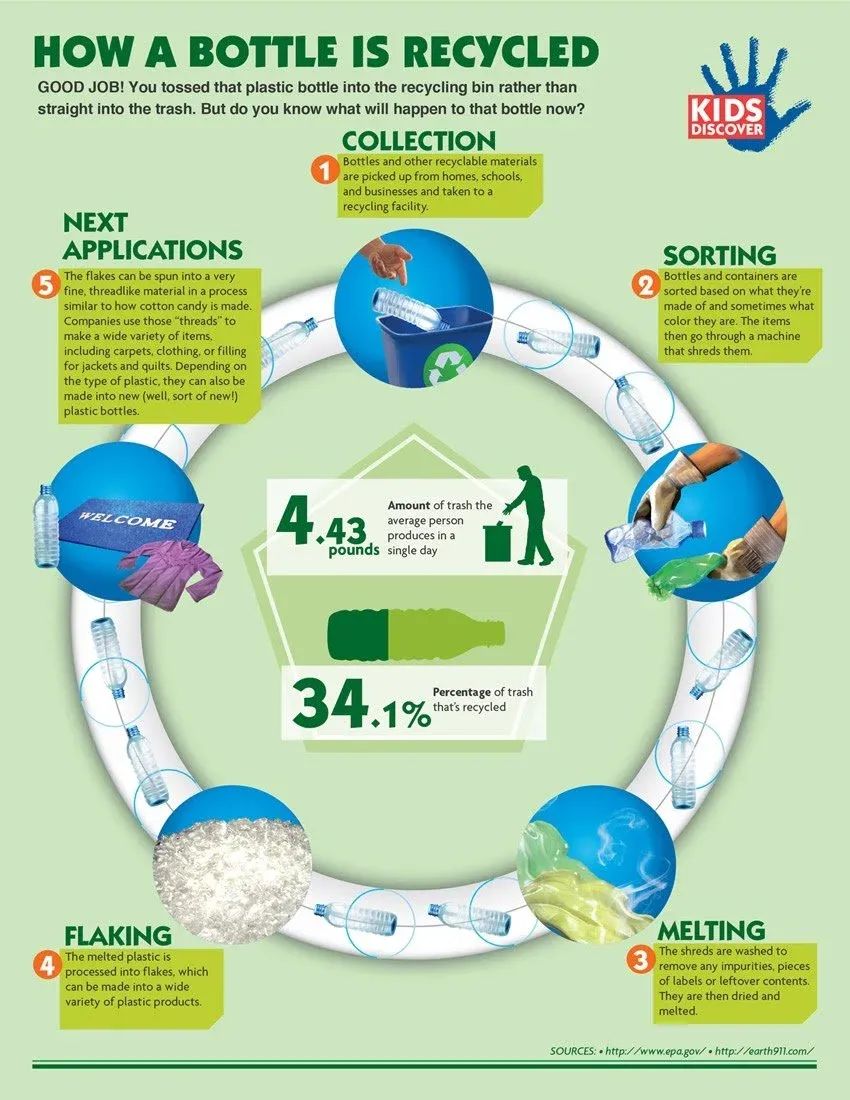Sustainable Transformation of Plastic Packaging: How Brands Can Take Control in the Green Wave
In modern industrial society,Plastic, as a highly versatile and practical material,Since its invention, it has rapidly integrated into various industries. However, the environmental challenges it brings have also become increasingly apparent. With the continuous growth of plastic production, how to reduce the negative impact of plastic on the environment has become a focus of concern across all sectors.
— 1 —
Alarm over plastic use: UK households throw away 1.7 billion pieces of plastic every week
According to the largest plastic waste survey ever conducted in the UK—"The Big Plastic Count"—British households throw away up to 1.7 billion plastic items every week.This staggering data, equivalent to about 60 pieces of plastic waste generated by each household every week, not only reveals the widespread use of plastic but also underscores the urgency of finding sustainable alternatives in plastic packaging.
— 2 —
Brands play a key role in the sustainability of plastic packaging.
Against the backdrop of increasing consumer environmental awareness and increasingly stringent policy regulations,Brands are being asked to take more responsibility for the sustainability of plastic packaging.However, this transformation process is not simple: while pursuing environmental goals, brands also need to consider cost control, market price sensitivity, and the balance between product display and protection effects.
— 3 —
Spending on sustainable packaging materials is surging and is expected to double in the next five years.
According to the L.E.K. Consulting 2025 European Brand Packaging Survey,European brand owners have currently allocated 42% of their packaging budgets to sustainable materials.Compared to 28% four years ago, there has been a significant increase, and it is expected to reach 59% by 2028. This continuous upward investment trend indicates that,The brand has incorporated an environmental strategy into its core business plan.。
Among them, the brand is actively developing low-carbon footprint packaging materials, such as:Locally procure packaging materials to reduce transportation emissions.Using recyclable materials and optimizing production processes to reduce energy consumption are among these measures. These efforts not only help achieve environmental goals but also realize long-term cost savings by reducing resource waste.

— 4 —
Trade-off under cost pressure: Sustainability relegated to a secondary factor
However, the economic pressures in reality are reshaping the decision-making logic of brands. The survey indicates that...38% of companies currently list "material cost savings" as the primary reason for changing packaging materials.Sustainability has dropped to sixth place. This shift indicates:The market urgently needs solutions that are both environmentally friendly and cost-effective.。
In terms of packaging innovation, brands no longer solely pursue eco-friendly materials but seek alternative options with a higher cost-performance ratio. This means that onlyIncorporate sustainability into full lifecycle management.——Only by integrating raw material sourcing, production, distribution, and recycling can we truly achieve the unity of environmental goals and commercial returns.
— 5 —
The biggest obstacles to sustainable transformation: cost and raw material supply.
Despite the irreversible trend of environmental protection,High investment costs remain the primary obstacle preventing companies from adopting sustainable packaging.Nearly 60% of brands reported that cost pressures severely constrain their plans for environmental upgrades.18% of brands (mostly small and medium-sized enterprises) claim they are unable to obtain sufficient sustainable packaging materials.This makes it difficult to completely phase out traditional plastics.
To address this bottleneck, the industry is calling for the government to introduce more incentive policies to encourage investment.Recycling Infrastructure and Recycled Material TechnologyFor example, expanding the plastic recycling system and increasing the availability of high-quality recycled materials will be key to accelerating the industry's green transition.
— 6 —
Beware of Green Packaging False Advertising: Consumers Are Becoming More Discerning
During the transformation process, brands must also be wary of "greenwashing" behaviors. For example, some composite paper materials may appear environmentally friendly on the surface but actually cause a higher environmental burden due to difficulties in recycling.Today's consumers have a deeper understanding of sustainability and can quickly identify false environmental claims.Therefore, when promoting eco-friendly packaging, brands must ensure that their claims are genuine.
— 7 —
Innovation Drives Change: A Promising Future for Sustainable Packaging
Despite facing various challenges, many brands stillSustainable packaging regarded as a long-term strategic focus.In this process, innovation becomes the key to breaking the deadlock. Whether it is...Exploring new materialsorImprove the production process…all reflect the enterprise’s efforts to seek a balance between the environment and the economy.
At the same time, industry leaders must be alert: not all seemingly eco-friendly packaging solutions can achieve true environmental value.Only by scientifically evaluating the packaging system and establishing a verifiable indicator systemOnly by doing so can consumer trust be won and sustainable value maximized.

— 8 —
Policy coordination drives industry progress; working in isolation should be avoided.
Currently, some brands have already voluntarily invested in the construction of sustainable packaging systems, butOverall progress remains constrained by regulatory lag and lack of unified standards.For example, several European countries are promoting the Extended Producer Responsibility (EPR) system, but the pace of implementation and specific details remain unclear, causing many brands to adopt a wait-and-see attitude. If competitors do not implement reforms simultaneously, early adopters may face a cost disadvantage, which could further slow down the overall progress of the industry.
Therefore,The government, enterprises, and consumers need to collaboratively advance system design and enhance enforcement efforts.Establish a fair competitive environment and promote the rapid implementation of sustainable innovation.
— 9 —
Conclusion: The Sustainable Revolution in Plastic Packaging—Brands Should Take the Lead
In the future, the plastic packaging industry will not only compete based on material performance but also...Seeking the optimal solution between sustainability, cost control, and market competitiveness.Only by truly integrating the concept of environmental protection into their core strategy can brands remain invincible amid policy changes and consumer expectations.
In this era where the plastic circular economy is gradually taking shape,Brands that actively drive sustainable change will become industry leaders.This is not just about being a passive follower. It concerns not only the survival and development of the enterprise itself but also a solemn response to environmental and social responsibilities.
【Copyright and Disclaimer】The above information is collected and organized by PlastMatch. The copyright belongs to the original author. This article is reprinted for the purpose of providing more information, and it does not imply that PlastMatch endorses the views expressed in the article or guarantees its accuracy. If there are any errors in the source attribution or if your legitimate rights have been infringed, please contact us, and we will promptly correct or remove the content. If other media, websites, or individuals use the aforementioned content, they must clearly indicate the original source and origin of the work and assume legal responsibility on their own.
Most Popular
-

EVA Morning Prices on September 12: Most of the Market Holds Steady, Highest Rise of 50 Yuan
-

Domo Chemicals Files for Bankruptcy Protection in Germany! B. Braun Launches New Supply Assurance Program
-

Vynova's UK Chlor-Alkali Business Enters Bankruptcy Administration!
-

[PET Weekly Outlook] Polyester Bottle Chips Expected to Oscillate and Warm Up with Costs Today
-

Case Study | Clariant AddWorks™ Additives Solve Plastic Yellowing Problem






